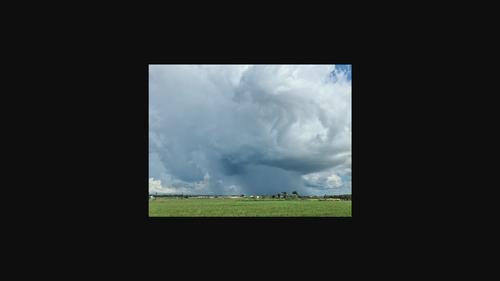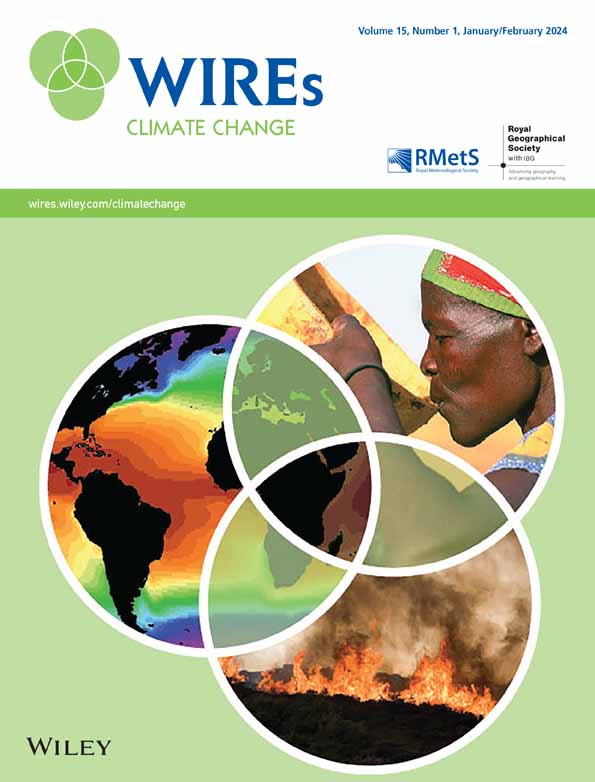Variability and long‐term change in Australian monsoon rainfall: A review
IF 10.3
1区 环境科学与生态学
Q1 ENVIRONMENTAL STUDIES
引用次数: 4
Abstract
The Australian monsoon delivers seasonal rain across a vast area of the continent stretching from the far northern tropics to the semi‐arid regions. This article provides a review of advances in Australian monsoon rainfall (AUMR) research and a supporting analysis of AUMR variability, observed trends, and future projections. AUMR displays a high degree of interannual variability with a standard deviation of approximately 34% of the mean. AUMR variability is mostly driven by the El Niño‐Southern Oscillation (ENSO), although sea surface temperature anomalies in the tropical Indian Ocean and north of Australia also play a role. Decadal AUMR variability is strongly linked to the Interdecadal Pacific Oscillation (IPO), partially through the IPO's impact on the strength and position of the Pacific Walker Circulation and the South Pacific Convergence Zone. AUMR exhibits a century‐long positive trend, which is large (approximately 20 mm per decade) and statistically significant over northwest Australia. The cause of the observed trend is still debated. Future changes in AUMR over the next century remain uncertain due to low climate model agreement on the sign of change. Recommendations to improve the understanding of AUMR and confidence in AUMR projections are provided. This includes improving the representation of atmospheric convective processes in models, further explaining the mechanisms responsible for AUMR variability and change. Clarifying the mechanisms of AUMR variability and change would aid with creating more sustainable future agricultural systems by increasing the reliability of predictions and projections.

澳大利亚季风降水的变率和长期变化:综述
从遥远的北部热带地区到半干旱地区,澳大利亚季风为大陆的广大地区带来了季节性降雨。本文综述了澳大利亚季风降雨(AUMR)研究的进展,并对AUMR变率、观测趋势和未来预测进行了支持分析。AUMR表现出高度的年际变异,标准差约为平均值的34%。虽然热带印度洋和澳大利亚北部的海表温度异常也有一定作用,但AUMR的变化主要是由厄尔Niño -南方涛动(ENSO)驱动的。年代际AUMR变率与年代际太平洋涛动(IPO)密切相关,部分原因是IPO对太平洋Walker环流和南太平洋辐合带的强度和位置的影响。AUMR呈现一个世纪的正趋势,在澳大利亚西北部,这一趋势很大(每十年约20毫米),在统计上具有显著性。所观察到的趋势的原因仍有争议。由于气候模式对变化迹象的一致性较低,下个世纪AUMR的未来变化仍不确定。并提出了提高对AUMR的理解和对AUMR预测的信心的建议。这包括改进模式中大气对流过程的表示,进一步解释造成AUMR变率和变化的机制。澄清AUMR变异和变化的机制将有助于通过提高预测和预测的可靠性来创建更可持续的未来农业系统。
本文章由计算机程序翻译,如有差异,请以英文原文为准。
求助全文
约1分钟内获得全文
求助全文
来源期刊

Wiley Interdisciplinary Reviews: Climate Change
METEOROLOGY & ATMOSPHERIC SCIENCES-
CiteScore
20.00
自引率
2.20%
发文量
58
审稿时长
>12 weeks
期刊介绍:
WIREs Climate Change serves as a distinctive platform for delving into current and emerging knowledge across various disciplines contributing to the understanding of climate change. This includes environmental history, humanities, physical and life sciences, social sciences, engineering, and economics. Developed in association with the Royal Meteorological Society and the Royal Geographical Society (with IBG) in the UK, this publication acts as an encyclopedic reference for climate change scholarship and research, offering a forum to explore diverse perspectives on how climate change is comprehended, analyzed, and contested globally.
 求助内容:
求助内容: 应助结果提醒方式:
应助结果提醒方式:


